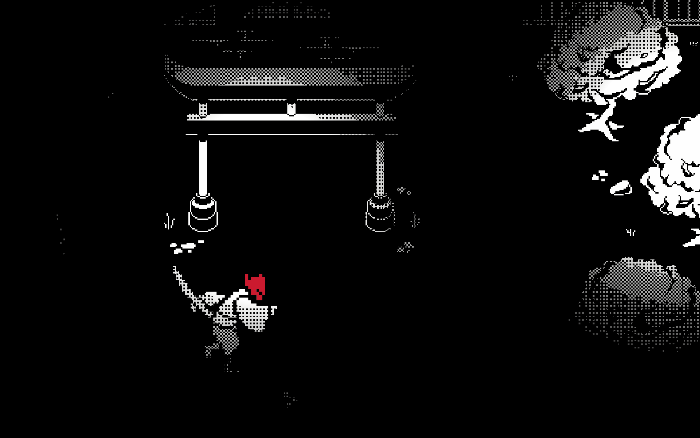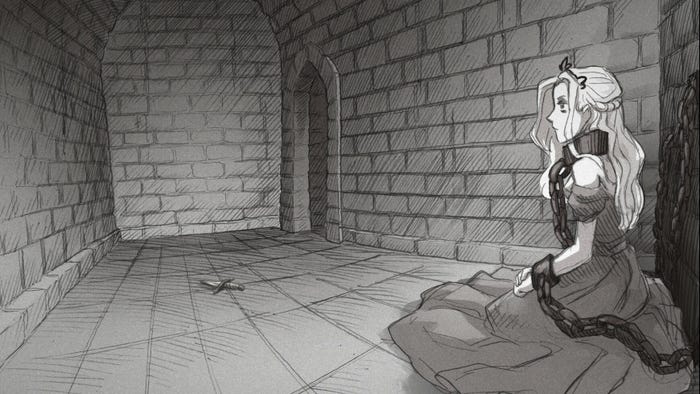Trending
Opinion: How will Project 2025 impact game developers?
The Heritage Foundation's manifesto for the possible next administration could do great harm to many, including large portions of the game development community.

Gotta hand it to game developers: they definitely know the value of having crossover skillsets.
This is true not just in game development but also in the dev-authored sections of Game Developer. In 2024, our deep dive writers explored art direction, animation, UI/UX, sound design, narrative design, physics, and even community development. And not only did each of them offer a lot of insight into their respective fields, they also wrote a damn good article in the process. Not bad for a group who already has a day job.
This year’s selection of must-read deep dives is a who’s who of some 2024’s best games, from indie critical darling Slay the Princess to the equally-darling Little Kitty, Big City, and high-octane open-world RPG Echo Point Nova. Here are ten of the section's best articles.

By Matt Larrabee
“I’d like to highlight how any given game mechanic can’t really be viewed in isolation. For player physics, I can’t even imagine what it would have felt like in Echo Point Nova without camera effects, sound FX, and VFX. We can expand that further and say that all this work on getting the feel of movement tuned wouldn't matter if the levels weren't interesting, and we can zoom out even further and say the movement system wouldn’t matter if it was unlocked in a weird part of the game or wasn’t tutorialized well.”
This overview of the movement system in Echo Point Nova illustrates the deep root system that lies beneath seemingly surface-level design decisions. The game’s high-speed fluidity, imperative to the open-world FPS’ grappling and hoverboard features, is a symbiosis between key audio and visuals, including camera motion, field of view distortion, and impeccable sound effects. Read what developer Matt Larrabee had to say about the games that influenced Echo Point Nova’s movement style and the role of holistic game design.

By Finn Carney
“An intricate and perfectly thought-through system, or a deep level of control over every aspect of a system, doesn't matter unless the player can understand it and have fun with it. Figure out how your player is meant to interface with your game first, then design complexity within what they can meaningfully engage with.”
When developers at Nerial set out to make a game about reality TV, they were prepared to deliver a title that channeled the strengths they were already known for: colorful character interactions and complex narrative branching delivered within a roguelike-ish structure. What they weren’t prepared for, however, was the challenge of developing a mechanic for filming TV and then creating criteria for critiquing video footage. Level designer Finn Carney walks us through the logistical roadblocks encountered during the development of The Crush House, including how the team translated certain camera mechanics to gameplay.

By Joseph Humfrey
“Does adding a photo mode to a 2D game make any sense? Surprisingly, it can do, yes! But only if the player is given the tools to create something more than a simple screenshot.”
While photo modes are largely considered the realm of 3D, open-world games, inkle studios makes a strong case for their use in 2D and sidescrolling titles, showing us how the challenge was approached in A Highland Song and what tools they gave the player in order to create the photos they want to take. Read the deep dive from Joseph Humfrey.

By Valeska Martins and Ellinor Zetterman
“I think the primary takeaway we have from this experiment is that you shouldn't be afraid to try things. No result is a bad result as long as you're willing to learn from it. So, go out there! Break stuff! Iterate! Make stuff that's better than what came before it!”
In a game as complex as Crusader Kings III, a proper tutorial mode is everything. However, even the most thorough tutorial modes are subject to player agency and can be stymied by overwhelming or inefficient UX design. Here’s how the team at Paradox Interactive used internal data to assess the former Crusader Kings III tutorial and condense it into a more time-efficient experience, prioritizing the player’s short attention span while retaining key game concepts.

By Antônio Rivero
“So the system we ended up with was: we had the scenery, which was illuminated with a palette of seven colors that served as the shades from lighter to darker in environment objects, plus five "accent" colors that were not affected by lighting. Characters were always flat black and white, with some details using the accent colors, while environment objects had materials that used a subset of the seven colors and had different lighting parameters. Each environment object has up to five colors from the seven, with two of them usually being black and white, with this limitation being very useful for building a visual hierarchy.”
The art direction of Bloodless is minimalist, high-contrast and incredibly distinct, what Point N' Sheep lead programmer Antônio Rivero refers to as “hi-bit”: the goal was to create a somewhat monochromatic visual style but with more modern embellishments. In developing its look, looking to sources like The Return of the Obra Dinn and Hell is Other Demons, the team pushed the limits of Unity’s lighting tools, expanding their knowledge of dithering shaders and water rendering techniques to maximize the effects. Here’s how they did it.

By Benedict Sanderson
“First of all, do a lot of research. What you can achieve and how you can do it all changes depending on what software you use; native Unreal audio has its own systems and quirks, FMOD has its own toolset, Wwise is more expensive but has “portalling” built in to make life easier, and so on. Don’t be put off if you can’t use fancy middleware on your project, because there are plenty of games out there that have great audio systems with just the native engine audio capabilities.”
For Garden Life, sound designer Benedict Sanderson felt a laidback, improvisational quality to the soundtrack would best suit the game’s idyllic country setting. Putting an emphasis on believability over realism, here are the tools and libraries he used in designing audio that would stay fresh and respond to the player’s actions while not becoming too repetitive or random.

By Micah Breitweiser
“Bringing Kitty to life was a long and collaborative process. Especially on a project like a video game, finding what “works” can often be a counterintuitive cycle of adjust-and-assess, one that only ends when people are finally able to say “yeah, that’s better” with enough satisfaction to end the discourse. Finding a creative goalpost is essential. Once you know where you’re headed, you choose the techniques that will serve you best in getting there.”
There is much to love about Little Kitty, Big City, from its urban slice-of-life setting to its soft visual style, to its amusing and relatable depiction of a cat’s everyday life. And it’s the animations that perhaps give the game most of its charm, with every hop, leap and biiiiig stretch bringing its adorable feline protagonist to life.
But while the game seems to thrive on accuracy, surprisingly, its animator says she took a more stylized approach to Kitty’s movements, and that as they added anthropomorphic elements and layers of abstraction, the animations began to feel more realistic, not less. This deep dive explains why the “pantomime” of “portraying cats as we see them” was the best possible route for Kitty’s design.

By Michal Amielanczyk
“Here’s how we work with the creators: we aim for mid-sized ones, which I’d define as 250 to 1,000 average viewers (Twitch) and 25,000 to 100,000 views (YouTube). We’re always trying to select relevant creators who have played the genre; if someone is huge but exclusively streams GTA 5, we’ll pass. We try to spread out the sponsorships to boost the weekend traffic. We ask the creators to share the link to the store page. We ask them to play or link the official feature trailer for the update. We never censor the videos or police the opinions.”
Launching a game in early access is a unique opportunity to build your community incrementally through collaboration with influencers and open lines of communication with your fans. Giving insight into how to cultivate an organic interest in your game is Mechanistry comms manager Michal Amielanczyk, who reveals the marketing strategy that helped Timberborn's popularity soar with only two years in pre-release, revealing specific milestones, what worked to build Steam wishlist numbers, and how to keep the players happy without a development roadmap.

By Tony Howard-Arias
“As game writers, we will never be able to see directly in our players’ heads, nor will our players be seated directly at the writer’s table. But by building the foundations of our games with their agency in mind, and by looking at our work through their perspectives throughout development, we can better take advantage of our medium and build meaningful experiences that connect with even more people.”
Slay the Princess is one of the best-written games of the past year, so much so that peeking behind the curtain feels like stealing divine secrets. In this deep dive, lead writer at Black Tabby Games Tony Howard-Arias explains how they tackled the monumental task of crafting the game’s complex branching narrative while managing scope creep and retaining player agency within its greater overarching structure.
Thank you for exploring the year’s can’t-miss Deep Dives with us! This article is one of many 2024 reflections hitting Game Developer this month, with more to come! For even more thoughts and insights on the best of 2024, check out our Game Developer’s 2024 Wrap-Up keyword to catch up on all our End of Year content.
Read more about:
Game Developer's 2024 Wrap-Up: Top Games, Devs, and TrendsTop StoriesFeaturesDeep DivesGame Developer EssentialsYou May Also Like